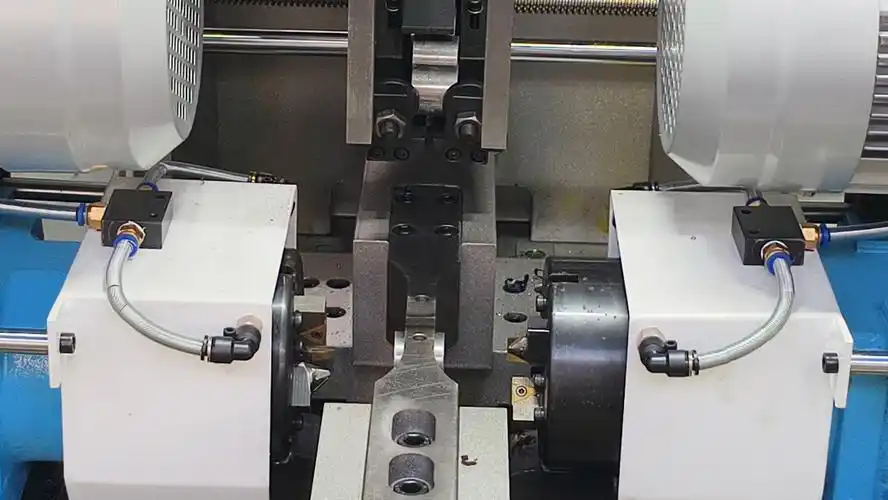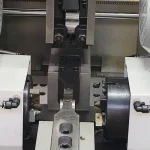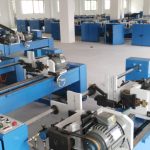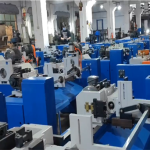1. Structural Differences
Single-head chamfering machine: Utilizes mechanical principles for processing, featuring a relatively simple structure.
Double-head chamfering machine: Typically designed as CNC machine tools equipped with servo motors and automated control systems, exhibiting a more complex structure.
2. Operational Method Comparison
Single-head chamfering machine: Requires manual control of parameters such as operating speed and feed rate, with operation relying heavily on experience.
Double-Head Chamfering Machine: Operates via program control with touchscreen parameter adjustment, offering greater convenience and flexibility.
3. Processing Accuracy Differences
Single-head chamfering machine: Accuracy constrained by mechanical structure and manual operation, resulting in relatively larger errors.
Double-head chamfering machine: Utilizes servo motor control, achieving precision up to 0.01mm with more consistent chamfer dimensions.
4. Work Efficiency Comparison
Single-head chamfering machine: Processes one end at a time, offering lower efficiency and suitability for small-batch production.
Double-head chamfering machine: Simultaneously processes both ends of workpieces, significantly boosting efficiency (e.g., processing 15-meter steel pipes at 15 pieces per minute).
5. Automation Level
Single-head chamfering machine: Typically requires manual loading/unloading.
Double-head chamfering machine: Supports automated loading/unloading, clamping, and feed control, enabling integration into production lines.
6. Recommended Application Scenarios
Single-head chamfering machine: Suitable for scenarios with lower precision requirements, small batches, or diverse processing needs.
Double-head chamfering machine: Ideal for high-volume production and high-precision applications (e.g., construction steel pipes, automotive exhaust pipes).





